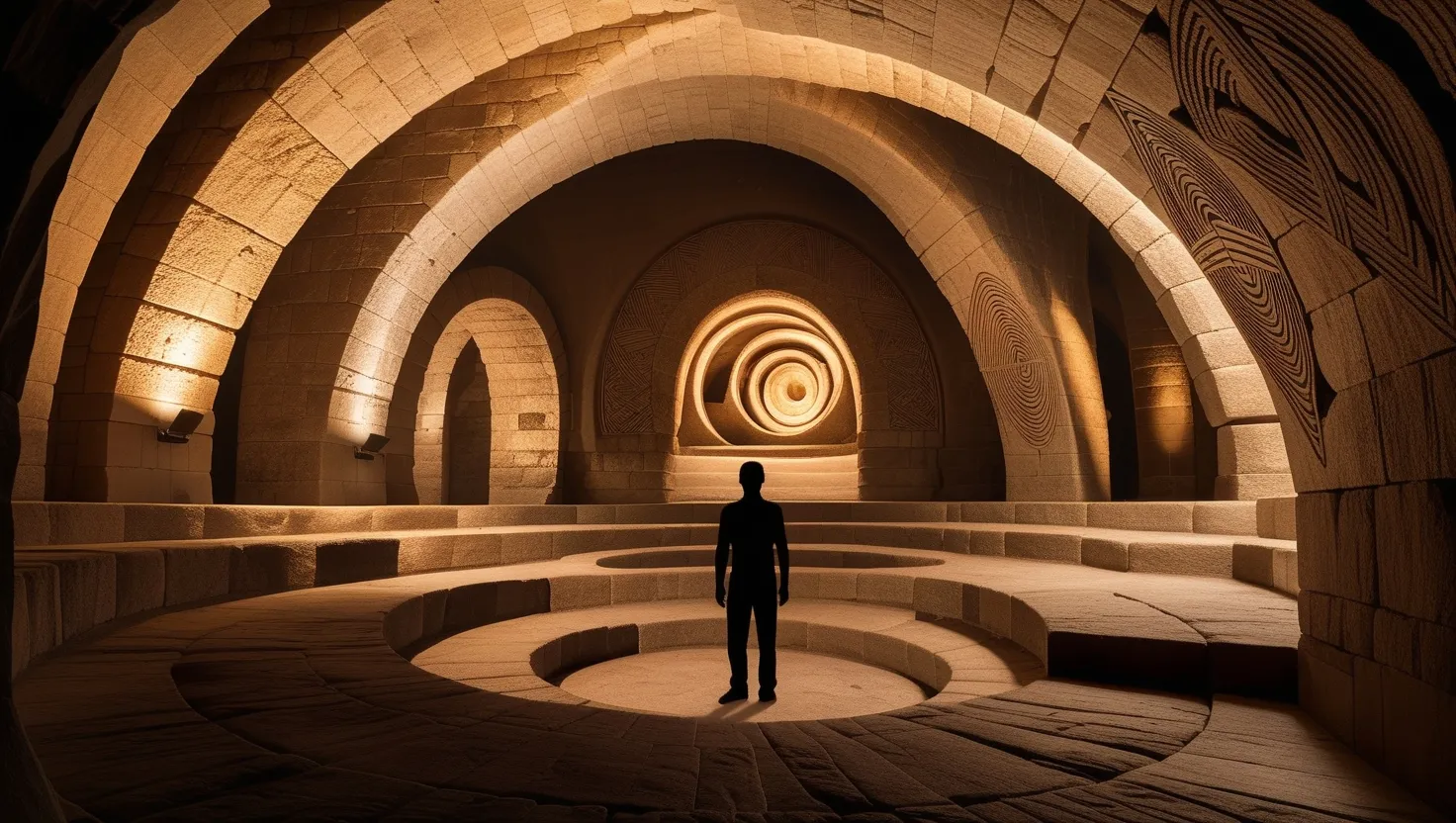If you ever find yourself standing in a stone chamber deep beneath the surface of Malta, you may feel a strange vibration in your bones before you hear it with your ears. Among the oldest buildings on Earth, these underground tombs and aboveground temples possess an acoustic quality that leaves both scientists and visitors puzzled—and sometimes moved in ways that seem almost supernatural.
“Science is not only a disciple of reason, but, also, one of romance and passion.” —Stephen Hawking
The Ħal Saflieni Hypogeum is the most famous of these ancient sites. Carved by hand from solid limestone more than five millennia ago, it stretches over three levels and gives off a presence that’s hard to describe. These chambers—built when the islands were inhabited by a people who hadn’t invented writing or even metal tools—create effects with sound that defy casual explanation.
What makes the Hypogeum so unique isn’t just its age or its role as a burial ground for thousands. It’s the phenomenon that happens in the Oracle Room: when a deep male voice chants at 110 hertz, the stone itself seems to hum, picking up and amplifying the sound. You don’t simply hear the resonance—you feel it vibrate through your body, a sensation that blurs the line between physical and emotional experience.
Have you ever considered how ancient people sensed the world without today’s technology? Were their bodies more attuned to these subtle phenomena, or did ritual give them access to altered states we now struggle to fathom?
This specific frequency isn’t an arbitrary choice. Research shows that the 110 hertz tone has measurable effects on the brain, shifting patterns that correlate with relaxation, trance, and focus. The Oracle Room responds only within a narrow range, suggesting that the builders were aiming for something intentional—not a coincidence from random construction errors.
“No great discovery was ever made without a bold guess.” —Isaac Newton
What brought a neolithic society—who worked only with antlers, stone, and obsidian—to create something so sophisticated? The architectural choices in Malta’s megalithic temples show a precise control of form and material. Orthostats (upright stone slabs) and corbelled roofs create corridors and apses that seem tuned, as if the entire building was an instrument.
If I look at the temples above ground, each is different in detail but shares certain features: semi-circular chambers, symmetrical layout, and carefully selected stones. The hard, outer coralline limestone holds up against the elements; the softer globigerina limestone is reserved for intricate decoration and places where subtle sound effects matter. Seems deliberate, doesn’t it?
Ask yourself: are we missing a hidden purpose behind these ancient places? Could spiritual transformation have depended as much on environmental effects—light, sound, even microclimate—as prayer or ritual?
Painted patterns—spirals, honeycombs, geometric shapes—adorn the ceilings and walls of the Hypogeum. Some speculate these were more than decoration. They may have acted as resonant amplifiers, or served as visual cues during ceremonies where sound played a central role. Combined with strategic light entering at specific times of the year, such as the winter solstice, it feels like the site was woven into the rhythms of both sun and sonic vibration.
“In seeking wisdom thou art wise; in imagining that thou hast attained it—thou art a fool.” —Lord Chesterfield
The Hypogeum is not alone in this acoustic enigma. Malta is dotted with megalithic temples like Ġgantija, Ħaġar Qim, and Mnajdra. Each demonstrates a mastery of construction that suggests advanced geometry and material science for its era. But in several, researchers have found odd standing waves and amplification effects—especially in confined chambers or passageways.
How did they do it? Some theorists suggest trial and error over generations. Others hint at a lost body of oral knowledge—maybe even a rudimentary science passed down by master builders. But with no written records surviving, we’re left wondering whether these techniques sprang up from intuition, ritual, or something we are not prepared to recognize.
“Those who cannot remember the past are condemned to repeat it.” —George Santayana
For much of the last century, the tombs were dismissed as simple burial spaces. Only in recent decades have acousticians measured their frequencies, mapping resonance patterns with modern equipment. The findings are consistent: sound in the Oracle Room behaves more like it’s in a specially designed chamber at an opera house than in a random cave.
If acoustics were so important, what was the goal? Some speculate sound therapy or communal trance induction—perhaps to aid mourning or facilitate spiritual journeys. Others go even further, imagining sonic technology for healing or communication. These speculations verge on science fiction, but isn’t it more fascinating to ask than to assume we know everything?
“Curiosity is the wick in the candle of learning.” —William Arthur Ward
Anthropologists digging in the Hypogeum encountered not just bones but unusually shaped skulls, curved in ways not typical of the population. Could this indicate a priestly class? Or was cranial shaping a custom tied to roles within ritual sound ceremonies? Malta’s artifacts—amulets, carved figures, and decorated pottery—hint at rich symbolic systems, but their meanings remain obscured by time.
Sometimes I wonder what it felt like to be among those ancient builders, laboring in dim light and sculpting rock with primitive tools. Did they perceive sound as a living presence, a spirit flowing through stone and ceremony? Was their understanding of nature so holistic that the difference between music, prayer, and architecture blurred into one?
“The most beautiful experience we can have is the mysterious.” —Albert Einstein
What makes sound so powerful in these places? Modern experience teaches us about echoes and reverberations, but these Maltese tombs generate effects that are not easily replicated elsewhere. Is it the shape, the material, the arrangement? Or is there some ingredient we have overlooked—a resonance between landscape, architecture, and the human body itself?
Perhaps the real achievement of the tomb builders was not technological but experiential. They shaped places where community, ritual, and sensation converged. People entering these spaces, whether for burial, prayer, or initiation, were enveloped in vibrational energy that heightened emotion or focus. The humming stones may have been as much a spiritual technology as a material one.
Do you think we underestimate the engineering and imagination of people from long ago? Would their world seem alien to us, or would we find traces of our own hopes and fears echoed in their creations?
Across time, these humming tombs have survived disaster, neglect, and misunderstanding. Their acoustic mystery is still alive, waiting for each visitor to stand in silence, speak, and listen as stone vibrates and the past pulses beneath the surface.
“Music expresses that which cannot be said and on which it is impossible to be silent.” —Victor Hugo
That leaves us with the question: what might the temples of Malta teach us, if we are willing to listen—not just with our ears, but with the whole of our awareness? Their hums call out, reminding us that the modern world still has old mysteries waiting just beneath the surface, inviting a fresh encounter with wonder each time we enter their echoing darkness.






